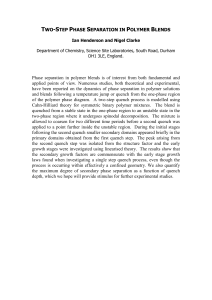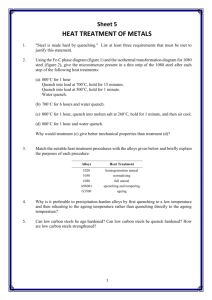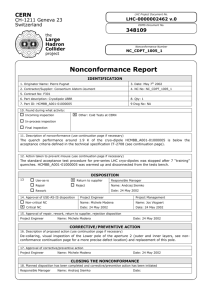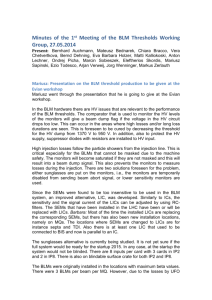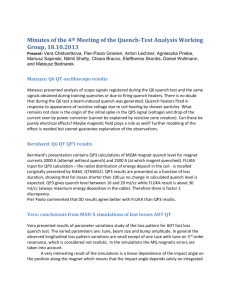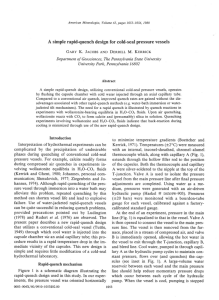Quenching
advertisement
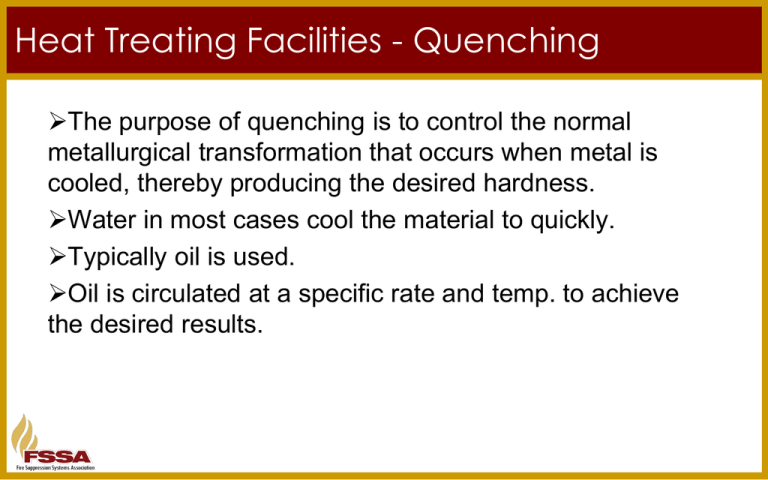
Heat Treating Facilities - Quenching The purpose of quenching is to control the normal metallurgical transformation that occurs when metal is cooled, thereby producing the desired hardness. Water in most cases cool the material to quickly. Typically oil is used. Oil is circulated at a specific rate and temp. to achieve the desired results. Heat Treating Facilities - Quenching • The process: Objects are heated in an oven and submerged into an oil bath. This oil is circulated around the object to cool it When completed, the object is raised out of the oil bath. Heat Treating Facilities - Quenching • Two types of quenching: Enclosed (Objects are lowered directly from a chamber in a furnace into a quench tank by an elevator or conveyor) Open (oil bath is a separate process fed from a external conveyor, crane, etc.) • What gets quenched: Engine / transmission / brake parts Tools Anything that needs hardening Quench Tanks – Fire Protection • Fire Hazard: Overheating of oil Quenching system and/or oil integrity compromised Introduction of water – causes boiling and oil to spread outside of quenching area Oil evaporation from hot metal being submerged causes flame ups if oil temp is above auto-ignition temp. Quench Tanks – Fire Protection • Enclosed Quench Areas of Concern: Exhaust Hoods (located at exit of furnace) Exhaust Ducts (located atop of the hood) Oil Catch Pans (located at exit of furnace) Vestibule area where treated product is exposed to the atmosphere when leaving the furnace Oil handling / cooling pumps Oil filtering devices Pit areas subject to spilling, splashing, condensation, leakage or dripping Quench Tanks – Fire Protection • Open Quench Areas of Concern: Oil Coolers Hood / Exhaust systems Entry and exit conveyors (if present) Areas subject to spilling, splashing, condensation, leakage or dripping Quench Tanks – Types of Systems • Types of protection: If oil is less than 212°F, a water spray system can be used. Above 212°F, A Carbon Dioxide or Dry Chemical system may be used. This is because the water could boil at these higher temps maker a more severe hazard. Type of Protection Extinguishing Method Temperature sensitive Contaminates Oil System Cost Water Spray Removes heat Yes Yes Low Dry Chemical Removes Oxygen No Yes Moderate Carbon Dioxide Removes Oxygen No No High • CO2 is preferred by most companies due to the lack of loss business • CO2 uses Local Application design principles (See FSSA Design Guidelines for Local Application) • Systems are typically automatically actuated • Fire is typically detected by industrial rate compensated heat detectors. • Very large Installation using CO2 at the Chrysler Transmission Plant in Kokomo, IN. Quench Tanks – Fire Protection Quench Tank – CO2 Hood Off Gas Igniters Finished Product Area Quench Tank in Pit Enclosed Quench Tank This particular installation has exposed flames to burn the ‘off gases’ when the vestibule door opens. Quench Tank – CO2 Open Quench. This particular installation has an overhead crane drop the items into this oil bath. Quench Tank – CO2 Oil Handling Equipment Drippings under conveyors needs to be protected. CO2 Fire Protection – Enclosed Quenches • Protection System Arrangement Exhaust Hood – local application, rate x area Exhaust Ducts – total flood deep-seated, 65% Adjacent Oil Handling Equipment – local application, rate x volume Pit Areas (if any) – total flood surface fire, 34% Conveyer Area (leaving the quench), local application, rate x area Vestibule Door (Screening Nozzle) - local application, rate x area CO2 Fire Protection – Enclosed Quenches CO2 Fire Protection – Open Quenches • Protection System Arrangement Oil Surface – local application rate x area Adjacent Oil Handling Equipment – local application, rate x volume Pit Areas (if any - enclosed) – total flood surface fire, 34% Pit Areas (if any – open-top) – local application, rate by area for open top pits* Tote Bin (if any), local application, rate x volume Conveyor (if any) - local application, rate x area Exhaust Hood (if any) - local application, rate x area Exhaust Ducts (if any) – total flood deep-seated, 65% * 4#/min /sq.ft. Refer to NFPA-12, 2011 edition B.5 CO2 Fire Protection – Open Quenches REFERENCES • References: NFPA -12 NFPA-13 NFPA-17 NFPA-34 NFPA-86C FM Loss Prevention Guide 7-41
